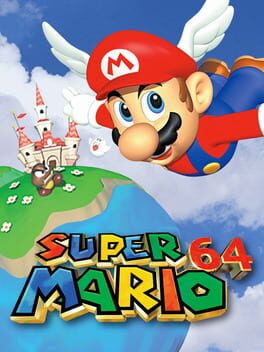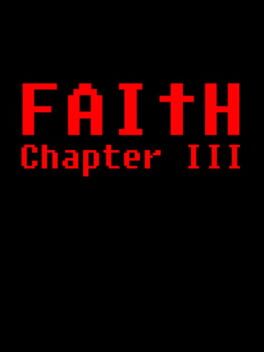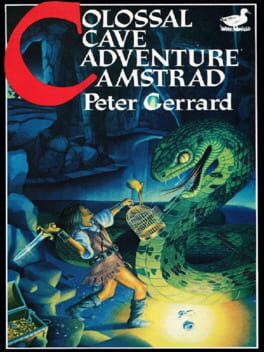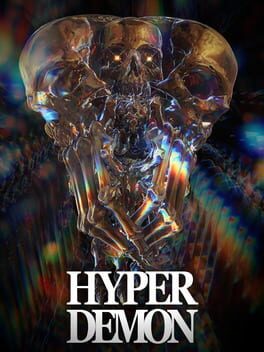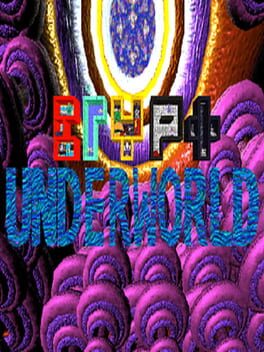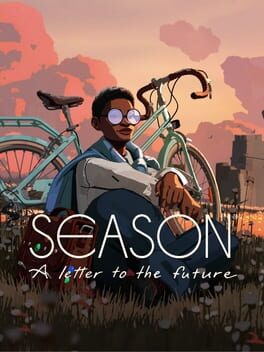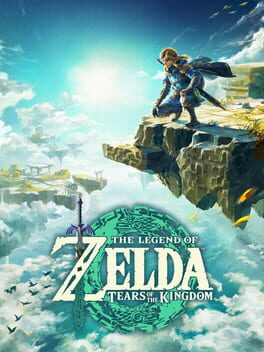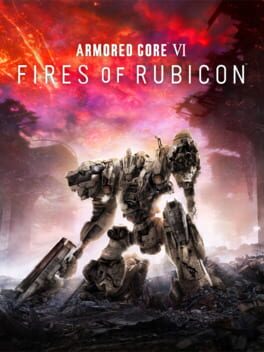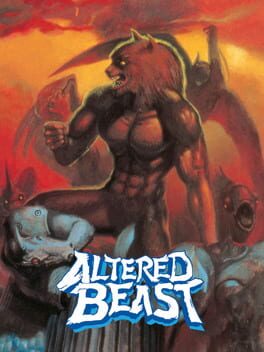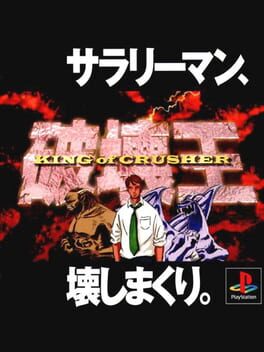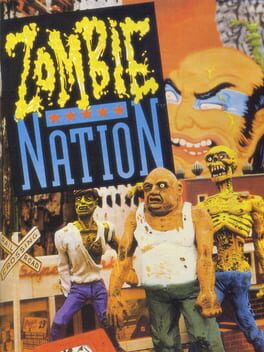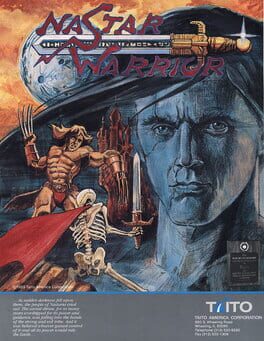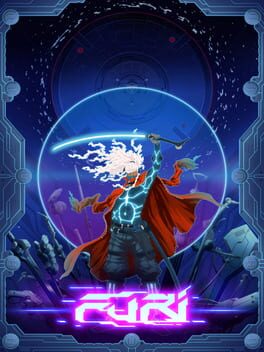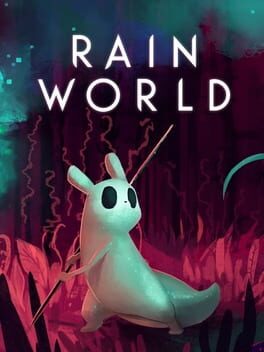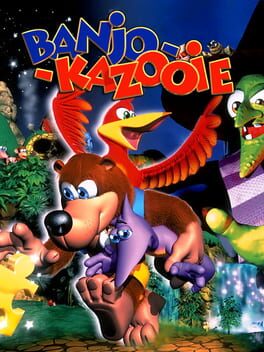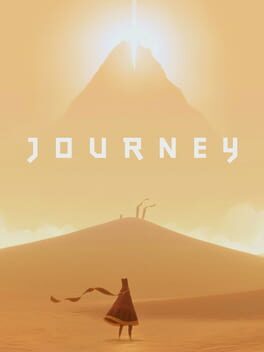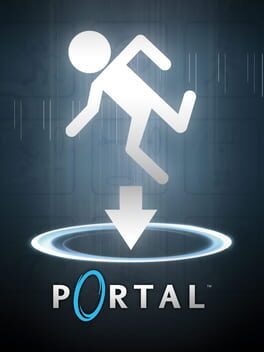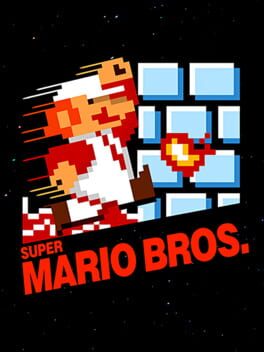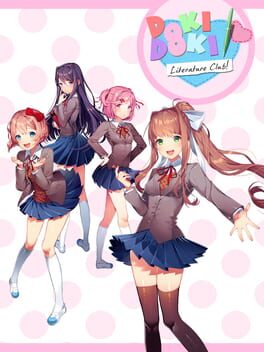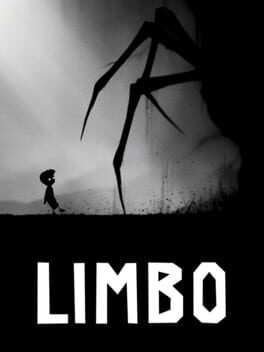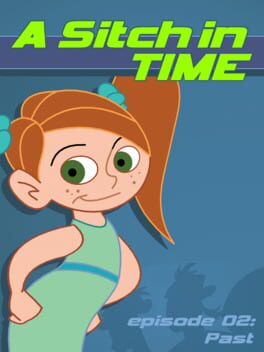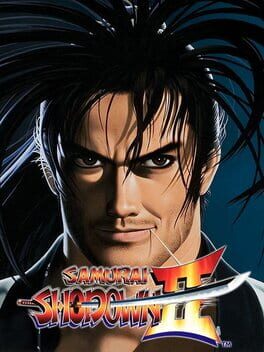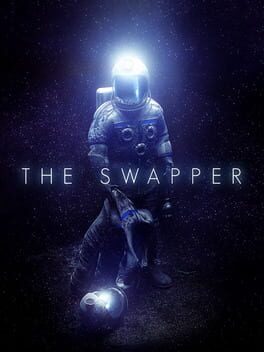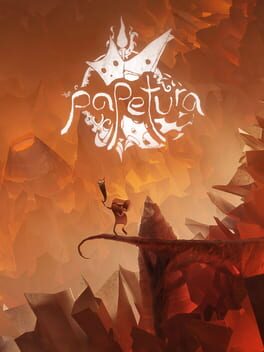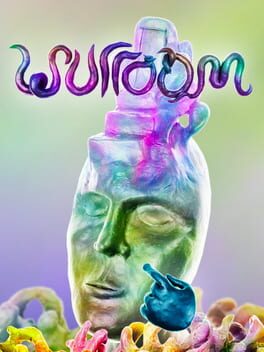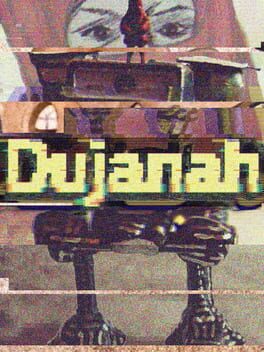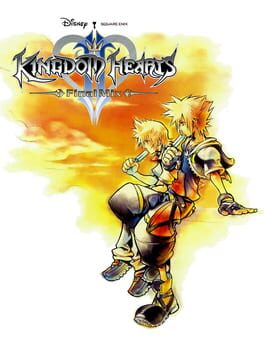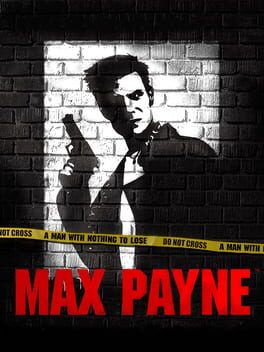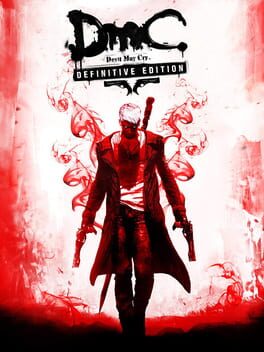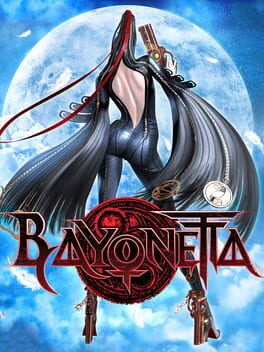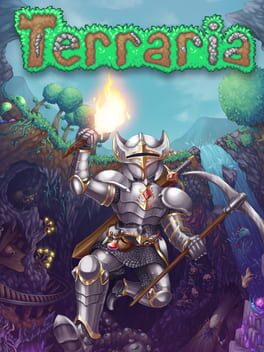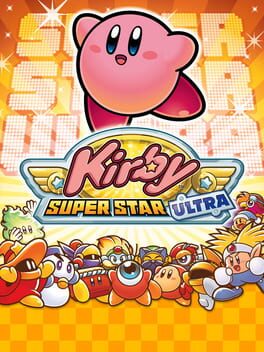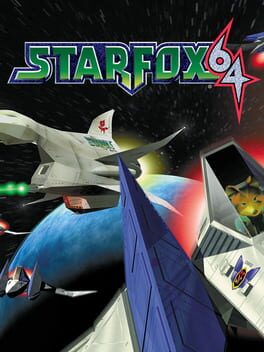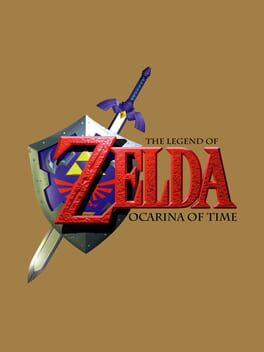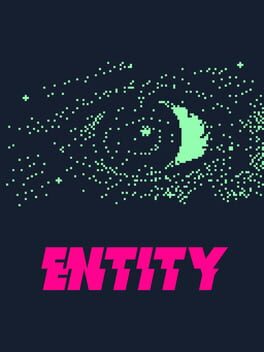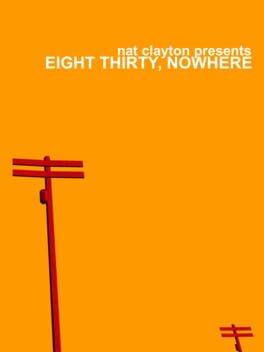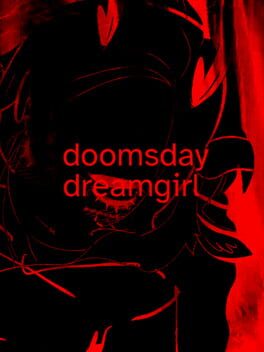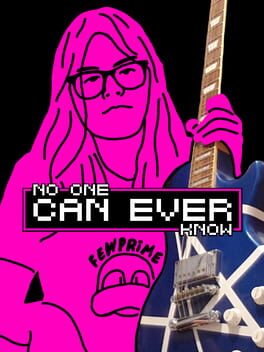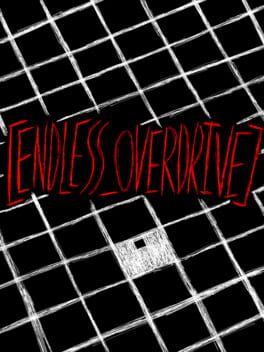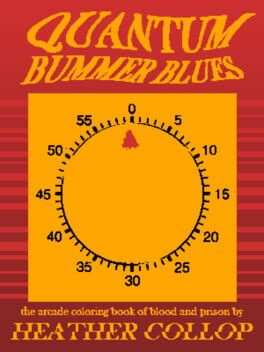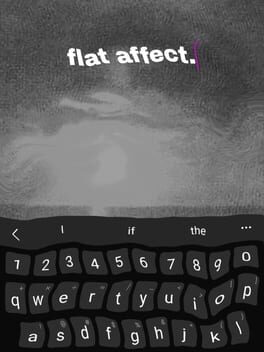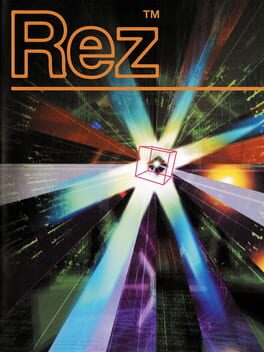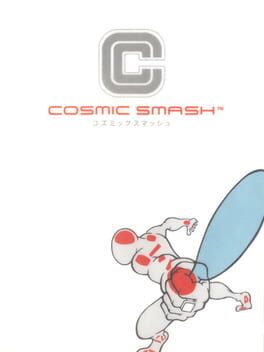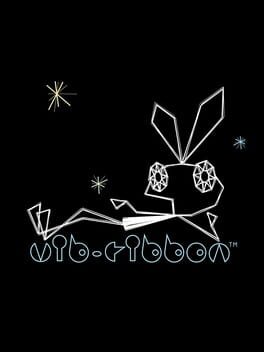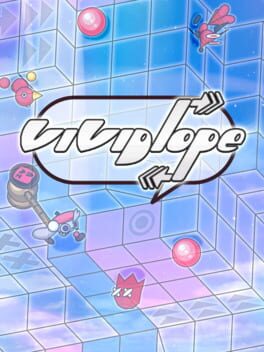MFossy
192 reviews liked by MFossy
Super Mario 64
1996
An experienced dev team's first foray into true 3D that, shockingly, gets it right all the way back in June 1996.
Absolutely rock-solid fundamentals which set the tone for the rest of the genre. Analog controls enable precise adjustment of angles which have huge downstream effects. A signature focus on momentum, combined with tricks both intentional and unintentional, birthed one of the most legendary and iconic speedrunning scenes of all time. Systems like this in a casual single player context, balanced to enhance rather than subvert challenges, are rare to find, and even the devs themselves never quite managed to recapture this particular flavor.
The level design here is emblematic of the early 3D era "golden age": enough detail and representation to evoke sense of place, but with the abstraction necessitated by the time's technology both facilitating dense layouts and imbuing the atmosphere with a surreal, dreamlike quality. No established formulas for success existed yet, so levels aren't overly concerned with providing the player a frictionless experience. Each expresses their own quirky character, something felt even more strongly than usual since gameplay is so contextualized by the precise placement of nearby geometry.
Shortcomings mainly occur in obtuse progression/secrets and a handful of stages (more concentrated in the latter half) that don't play to the game's strengths. Luckily, the huge modding scene has leveraged this fantastic foundation and learned from these mistakes to create a veritable cornucopia of visions, both vanilla-like and experimental, for you as a player to explore.
Yup, Quake is a pretty great game!
Absolutely rock-solid fundamentals which set the tone for the rest of the genre. Analog controls enable precise adjustment of angles which have huge downstream effects. A signature focus on momentum, combined with tricks both intentional and unintentional, birthed one of the most legendary and iconic speedrunning scenes of all time. Systems like this in a casual single player context, balanced to enhance rather than subvert challenges, are rare to find, and even the devs themselves never quite managed to recapture this particular flavor.
The level design here is emblematic of the early 3D era "golden age": enough detail and representation to evoke sense of place, but with the abstraction necessitated by the time's technology both facilitating dense layouts and imbuing the atmosphere with a surreal, dreamlike quality. No established formulas for success existed yet, so levels aren't overly concerned with providing the player a frictionless experience. Each expresses their own quirky character, something felt even more strongly than usual since gameplay is so contextualized by the precise placement of nearby geometry.
Shortcomings mainly occur in obtuse progression/secrets and a handful of stages (more concentrated in the latter half) that don't play to the game's strengths. Luckily, the huge modding scene has leveraged this fantastic foundation and learned from these mistakes to create a veritable cornucopia of visions, both vanilla-like and experimental, for you as a player to explore.
Yup, Quake is a pretty great game!
Mosa Lina
2023
For the longest time, I thought that the prevalent issue weighing down roguelites/likes was excessive RNG. Later on, I slightly adjusted my stance: RNG was okay, but a lack of player control to combat any unexpected changes as a result of RNG was not. In one fell swoop, Mosa Lina has neatly proven both of those issues to be mere symptoms of the root cause: modern roguelites/likes overemphasize the macro over the micro.
This problem I think, stems from the genre's overreliance upon meta-progression and run investment. While these would at first appear to be opposite ends of the spectrum (after all, meta-progression often relies upon you throwing away successive runs to gain some kind of advantage/pass certain checks), they both point to the same core issue of ultimately not respecting the player's time. In the former case, the moment-to-moment gameplay often isn't interesting enough to sustain a run. In the latter, the player either succeeds with the "god-run" and has to chase the high through more grinding all over again, or throws it all away due to mistakes/RNG and feels like absolute shit, lamenting what could have been with their hours spent, just inches away from the finish line.
Mosa Lina doesn't fall victim to this, because it was never about winning in the first place. There's no end to the game: the core concept infinitely loops and you'll never hit the credits roll unless you decide to manually mash through them in the pause menu. There's a scoring system in place, but the descriptions themselves often mock how points are handed out arbitrarily. On top of this, there's no meta-progression whatsoever because practically everything is unlocked and randomized from the start: you've got three randomized toys to play with out of a pool of nine randomly selected for the particular loop out of 21 possible toys, and if nothing works (which the game outright warns you will happen), just reroll until something sticks.
As a result, the game solves two problems at once: the aforementioned issue of filling up a player's time with weak moment-to-moment gameplay, and the classic issue of "lock-and-key" solutions creating linear puzzles that lack replayability. Although the game characterizes itself as "a hostile interpretation of the immersive sim," I find it to be more indifferent if anything. It doesn't guide you towards solutions, it never provides any incentives for finding solutions, and it never even bothers to explain its underlying mechanics aside from listing the control scheme and being forthright with its unpredictability. Yet by doing so, it sets itself up as the perfect player-driven sandbox. The difficulty and learning curve is entirely up to you; sure the types of tools are randomized, but half of the battle is figuring out what to do with the tool combinations given and exploiting the game's floaty gravity and set pieces with your heavy character and tight jump. If you can't succeed, a refresh is just seconds away!
I don't think I've yelled so much at a video game since my high school days of grinding Dota 2 (a very dark period in my life, I'm aware). However, these were not yells of frustration or exasperation in the slightest. No, this was me shouting in excitement every time something batshit crazy happened on screen (read: pretty damn often). Sometimes the game really does ask for the seemingly impossible with huge gaps to cross/jump and absolutely garbage or ill-fitting tools that I can't even say feel balanced at times; I swear the fish have been useless in 80% of their appearances. That's what makes it so damn enthralling though: savoring the thrill of discovery when I learned how to bomb-jump in mid-air by properly timing my placements, or somehow finagling a solution by pushing and juggling around some crazy contraptions made of dead frogs, some wire, and a ladder. The possibilities felt endless, and while I do have some critique for the initially unintuitive aiming (you shoot upwards/downwards at a 75 degree angle from the horizontal and can't fine-tune your trajectory any further), this game really is the full and realized package it claims to be despite (or perhaps as a result of!) its lack of excessive streamlining. With Level Editor updates on the way, I can 100% see myself returning to mess around more in the future. I'm nothing but pleased as punch that a game which wasn't even on my radar has sufficiently blown me away: in a year of flashy major releases and tired conventions, Mosa Lina pulls back the curtain to reveal that the basics are all you need for a good show after all.
This problem I think, stems from the genre's overreliance upon meta-progression and run investment. While these would at first appear to be opposite ends of the spectrum (after all, meta-progression often relies upon you throwing away successive runs to gain some kind of advantage/pass certain checks), they both point to the same core issue of ultimately not respecting the player's time. In the former case, the moment-to-moment gameplay often isn't interesting enough to sustain a run. In the latter, the player either succeeds with the "god-run" and has to chase the high through more grinding all over again, or throws it all away due to mistakes/RNG and feels like absolute shit, lamenting what could have been with their hours spent, just inches away from the finish line.
Mosa Lina doesn't fall victim to this, because it was never about winning in the first place. There's no end to the game: the core concept infinitely loops and you'll never hit the credits roll unless you decide to manually mash through them in the pause menu. There's a scoring system in place, but the descriptions themselves often mock how points are handed out arbitrarily. On top of this, there's no meta-progression whatsoever because practically everything is unlocked and randomized from the start: you've got three randomized toys to play with out of a pool of nine randomly selected for the particular loop out of 21 possible toys, and if nothing works (which the game outright warns you will happen), just reroll until something sticks.
As a result, the game solves two problems at once: the aforementioned issue of filling up a player's time with weak moment-to-moment gameplay, and the classic issue of "lock-and-key" solutions creating linear puzzles that lack replayability. Although the game characterizes itself as "a hostile interpretation of the immersive sim," I find it to be more indifferent if anything. It doesn't guide you towards solutions, it never provides any incentives for finding solutions, and it never even bothers to explain its underlying mechanics aside from listing the control scheme and being forthright with its unpredictability. Yet by doing so, it sets itself up as the perfect player-driven sandbox. The difficulty and learning curve is entirely up to you; sure the types of tools are randomized, but half of the battle is figuring out what to do with the tool combinations given and exploiting the game's floaty gravity and set pieces with your heavy character and tight jump. If you can't succeed, a refresh is just seconds away!
I don't think I've yelled so much at a video game since my high school days of grinding Dota 2 (a very dark period in my life, I'm aware). However, these were not yells of frustration or exasperation in the slightest. No, this was me shouting in excitement every time something batshit crazy happened on screen (read: pretty damn often). Sometimes the game really does ask for the seemingly impossible with huge gaps to cross/jump and absolutely garbage or ill-fitting tools that I can't even say feel balanced at times; I swear the fish have been useless in 80% of their appearances. That's what makes it so damn enthralling though: savoring the thrill of discovery when I learned how to bomb-jump in mid-air by properly timing my placements, or somehow finagling a solution by pushing and juggling around some crazy contraptions made of dead frogs, some wire, and a ladder. The possibilities felt endless, and while I do have some critique for the initially unintuitive aiming (you shoot upwards/downwards at a 75 degree angle from the horizontal and can't fine-tune your trajectory any further), this game really is the full and realized package it claims to be despite (or perhaps as a result of!) its lack of excessive streamlining. With Level Editor updates on the way, I can 100% see myself returning to mess around more in the future. I'm nothing but pleased as punch that a game which wasn't even on my radar has sufficiently blown me away: in a year of flashy major releases and tired conventions, Mosa Lina pulls back the curtain to reveal that the basics are all you need for a good show after all.
Faith: Chapter III
2022
Making the setting of a game like Faith as convincingly rancid as it is, religiously speaking, requires one to be well-read. All the latin here is meaningful, the gnostic symbolism thematically relevant, and in 2022, fifty years deep into this corner of horror storytelling, the territory is well-trod enough that it’s difficult to do anything really original, narratively, so it’s best to synthesize from the best, and Airdorf clearly does that throughout the Faith trilogy. Chapter 3 is the most substantial entry in the series from both a textual and play standpoint, even accounting for the way Chapter 2 is split into two parts, so its influences shine really brightly, in a mostly complimentary way. From the glaringly obvious stuff like the way the entire backbone of the emotional arc is tied to The Exorcist, to the cult plot adapting Rosemary’s Baby in increasingly big ways; to subtler things like pulling thematic context and imagery from Argento’s Inferno; to the ever present haze of Catholic and Protestant Apocrypha that colors the proceedings, there’s a lot to dig into if you want to look at Faith on a meta-level and this stuff I’ve listed is only scratching the surface of overt homage. But the thing I found myself thinking of the most while I played this one was, to my surprise, the 1974 BBC tv movie Penda’s Fen.
Penda’s Fen is about Stephen, the son of a pastor in the English countryside who is struggling through his last year of finishing school, struggling with his latent homosexuality, soon struggling with his conservatism, his faith, his understanding of English history, his understanding of church history, his understanding of his own history. These things manifest themselves as nightmares and hallucinations and eventually visions of imagined conversations and confrontations as Stephen begins to finally process what he imagines to be his weaknesses as he comes to a personal understanding of the violences imposed upon him by a stifling, cruel social order. The final sequence of the film (which you can basically only watch on youtube, and you can and should even though I am going to talk extensively about it here – it’s a very vibes-based experience) is a vision of Stephen on the hill where King Penda, the last Anglo-Saxon king in England and for whom Stephen’s town of Pinvin is named, was killed. He is visited by the spirits of modern British christofascism, who beckon him for the second time in such dreams, try to convince him that he is a chosen child, that he deserves to be their heir, that he will do great work with them and for them. When he rejects them he has to be saved from their wrath (“if we can’t have him no one can,” the Sick Mother says to the Sick Father) by the spirit of King Penda, who asks Stephen to “be secret. Child, be strange, dark, true, impure, and dissonant. Cherish our flame.” And Stephen silently begins his trek down the hill, to the town, to live his life with his eyes open, and under his own agency.
He is not so unlike John Ward. John is a pastor whose life as we know it is defined by his weakness, his victimhood, and his immutable desire to go one in spite of these things. Over the course of the trilogy we see, via flashbacks and visions and nightmares, John’s greatest moment of weakness – failing to exorcise Amy Miller, and in revisiting this moment over and over again the depth of his cowardice comes out. He goes so far as to make a deal with a demon (in disguise but a poor one) to escape the Miller home rather than try to salvage the situation or save the girl, knowing and even swearing that this act will seal her to the worst fate of anyone in the story, to be the vessel for the ultimate evil of the setting. Despite his collar, John doesn’t have faith in his God. It wasn’t strong enough when it mattered, and then it was lost, and it’s barely powerful enough to scrape him by when he needs it today. But he is driven to correct his mistakes, even if he has to suffer for them. And slowly, over the course of all three games, and conditional on the player intuiting the right course of action for John’s wellbeing, he can do this. He can save Amy, he can save his childhood sister figure Lisa from a similar fate, he can protect Father Garcia where he failed to protect his original mentor, he can rid himself of the demonic influence that has hung over his life since he and Lisa were victims of demonic ritual in their orphanage, and he will save the world from the profane sabbath.
Faith Chapter II introduced the idea that the cult recruits and preys upon the socially vulnerable, and Chapter III elaborates upon this idea, setting itself entirely within cult-run facilities: a maternity clinic, an apartment building, and a daycare center. This is an evolution of the origins of the cult, where one of the trilogy’s main villains, Sister Miriam, began the terrible practices that have evolved into the modern leadup to the Profane Sabbath by running an orphanage where she killed and experimented upon the children living there, including John and Lisa. Now her son Gary leads the proceedings towards the end of the world, where he steals babies from pregnant women and tells them they miscarried, or uses them to spawn devil children, and uses his tenants as fodder for his true demonic guests, and teaches the children in his daycare all sorts of things about the new, profane world that is going to arrive before they’re even familiar with the current one, all while beneath their feet the true cult actively works to make that world happen in their underground network of caves and tunnels.
This plays into Satanic panic stuff that has permeated the trilogy, unfounded anxieties by America’s far right and their impressionable suburban retinue about the dangers of abortion clinics and daycare facilities and urbanization and cohabitation; some of the ironic humor from past games is still there too – an example that springs to mind is Gary’s letter to the apartment complex warning them to avoid the demon haunting the building at all costs because it WILL kill them if it finds them, which details (inaccurate) instructions on how to do so, a memo that ends with a lighthearted note about rent collection and cost increases in a faux-affable tone that anyone with a corporate landlord will be intimately familiar with. Satanic Panic wasn’t just a quirky moment of hysteria in America’s past, though, it was a calculated cultural maneuver by the political right to stoke fear that would enable them to grab power and restrict freedoms, to exercise a fascistic view of who Americans Were and what Americans Should Look And Act Like against people who were Poor, Immoral, Unchristian, Nonwhite, and Antiauthoritarian. The police are the force we see actively fighting the cult more than anyone else throughout Faith and I don’t think that’s an accident.
Where a lot of media that inspired Faith is alternately directly or incidentally right wing in social messaging, or depicts the devilish as liberatory, Faith posits a world where these panicked, manufactured fears are real, and subverted against the people they’re designed to help. Something that lots of media in these sorts of spaces neglects when it comes to addressing the ways people create spaces for the marginalized is how fragile these spaces are – how vulnerable to attacks external but also infiltration by subversive power.
The important thing to understand here is that while John may be a man of the cloth with his restored faith by the end of the series, his restored power, the thing that enables him to do all of this, is not the Church. It’s arguably not God either. He is explicitly acting outside or against the orders of the Church throughout the trilogy. His entire life has been steered by institutions, whether he knows it or not, and they have each imposed their ideology upon him violently, to their gain and his personal suffering. He is a victim as much as any of the people he saves. The cult unmade and remade John. It implanted in him doubt, and fear, and demons personal and literal. His traumas inform his personage. They impose their ideology upon all of their acolytes, willingly or unwillingly, through isolation, manipulation, carrot-dangling, coercion, and violence. But the Church is not very different from this, at least to John. His time with the Church is objectively harmful to him. It’s arguable that he was put into situations he wasn’t ready for, wasn’t prepared for, that he was meat for the grinder of the exorcist cause. He is manipulated by Father Garcia into continuing a fight he has lost, and there are versions of the events of this game where he’s forced at gunpoint to finish it. John doesn’t derive sustenance from his faith, he only derives power from it. Nearly everything he gets from the Church is violently imposed upon him, too.
The only overtly supernatural element of Penda’s Fen, the only weird thing that is absolutely 100% tangibly happening outside of the psychoscape of the main character, is that there is a government facility dug underground, underneath the beautiful hills of the pastoral countryside, where some military experiments are happening. Midway through the film some teenagers are driving around late at night, a boy gets out of the car to pee, and stumbles across the facility, and whatever is in there maims him horribly. It’s unclear whether he’ll live. It’s a short sequence, and not revisited, but this is the ultimate wound at the heart of the film: that the hills, the country, the pagan pastures that symbolize freedom from repression and the cultural violence of British modernity IS in fact hollowed out and infiltrated by those same things and there's nowhere to really and truly get away from it. But that doesn’t mean you give into it. That doesn’t mean you become it. You still have to be strange, and dark, and true, and impure, and dissonant, and cherish our flame, as King Penda tells Stephen at the end of the film.
At the end of Faith Chapter III, when all the cultists are killed, and the demons are exorcised, or banished, and Amy Martin is finally put to rest, John is given a choice. The Unspeakable, the abominable horror that caused all of these problems for all these decades, that directed Sister Miriam and dealt with Gary and possessed Amy and was the recipient of the Profane Sabbath, was not defeated, only repelled. Garcia plans to dedicate his life to hunting and killing it. He’ll do this forever. When it’s done, he’ll find another demon to hunt. He’ll do it until he dies. He wants John to come with him. He wants soldiers.
Lisa asks John to put down the cross, to come with her. She doesn’t know where they’ll go, or what they’ll do, but she knows him, and she knows their history, and that they’re both victims, survivors, people without identities who for the first time, ever, have the freedom to figure themselves out if they’re only brave enough to take the first step. And she knows John can’t take that step with that collar around his throat.
If John chooses to go with Garcia, the ending is borderline comical in its machismo. They clasp hands, John says “Let’s hunt some demons,” and they drive off together into a surely badass future. But it’s hollow. John has learned conviction but he hasn’t learned anything else except how to be the person he was raised to be. Going with Lisa feels more true to the John we’ve gotten to know – the weak, morally frail man who found himself in the people he chose to love, radically, despite himself, and despite both sides of his social conditioning telling him at various points that his various mercies would be wrong to perform. John and Lisa also drive into an uncertain future, but first they clasp hands, not in the badass bro-ey way that he does in the Garcia ending but tenderly, fingers intertwined. In both endings the Unspeakable is out there. It could do all this again. An apocalypse was averted but it very much began, and we don’t know what the world looks like, really. But in one of them John is still tied to an institution that molded him into someone who couldn’t be good to other people. In the other he and Lisa are strange, and dark, and true, and impure, and dissonant. But they carry the flame. And it’s hard to believe they won’t be able to make something out of that.
Penda’s Fen is about Stephen, the son of a pastor in the English countryside who is struggling through his last year of finishing school, struggling with his latent homosexuality, soon struggling with his conservatism, his faith, his understanding of English history, his understanding of church history, his understanding of his own history. These things manifest themselves as nightmares and hallucinations and eventually visions of imagined conversations and confrontations as Stephen begins to finally process what he imagines to be his weaknesses as he comes to a personal understanding of the violences imposed upon him by a stifling, cruel social order. The final sequence of the film (which you can basically only watch on youtube, and you can and should even though I am going to talk extensively about it here – it’s a very vibes-based experience) is a vision of Stephen on the hill where King Penda, the last Anglo-Saxon king in England and for whom Stephen’s town of Pinvin is named, was killed. He is visited by the spirits of modern British christofascism, who beckon him for the second time in such dreams, try to convince him that he is a chosen child, that he deserves to be their heir, that he will do great work with them and for them. When he rejects them he has to be saved from their wrath (“if we can’t have him no one can,” the Sick Mother says to the Sick Father) by the spirit of King Penda, who asks Stephen to “be secret. Child, be strange, dark, true, impure, and dissonant. Cherish our flame.” And Stephen silently begins his trek down the hill, to the town, to live his life with his eyes open, and under his own agency.
He is not so unlike John Ward. John is a pastor whose life as we know it is defined by his weakness, his victimhood, and his immutable desire to go one in spite of these things. Over the course of the trilogy we see, via flashbacks and visions and nightmares, John’s greatest moment of weakness – failing to exorcise Amy Miller, and in revisiting this moment over and over again the depth of his cowardice comes out. He goes so far as to make a deal with a demon (in disguise but a poor one) to escape the Miller home rather than try to salvage the situation or save the girl, knowing and even swearing that this act will seal her to the worst fate of anyone in the story, to be the vessel for the ultimate evil of the setting. Despite his collar, John doesn’t have faith in his God. It wasn’t strong enough when it mattered, and then it was lost, and it’s barely powerful enough to scrape him by when he needs it today. But he is driven to correct his mistakes, even if he has to suffer for them. And slowly, over the course of all three games, and conditional on the player intuiting the right course of action for John’s wellbeing, he can do this. He can save Amy, he can save his childhood sister figure Lisa from a similar fate, he can protect Father Garcia where he failed to protect his original mentor, he can rid himself of the demonic influence that has hung over his life since he and Lisa were victims of demonic ritual in their orphanage, and he will save the world from the profane sabbath.
Faith Chapter II introduced the idea that the cult recruits and preys upon the socially vulnerable, and Chapter III elaborates upon this idea, setting itself entirely within cult-run facilities: a maternity clinic, an apartment building, and a daycare center. This is an evolution of the origins of the cult, where one of the trilogy’s main villains, Sister Miriam, began the terrible practices that have evolved into the modern leadup to the Profane Sabbath by running an orphanage where she killed and experimented upon the children living there, including John and Lisa. Now her son Gary leads the proceedings towards the end of the world, where he steals babies from pregnant women and tells them they miscarried, or uses them to spawn devil children, and uses his tenants as fodder for his true demonic guests, and teaches the children in his daycare all sorts of things about the new, profane world that is going to arrive before they’re even familiar with the current one, all while beneath their feet the true cult actively works to make that world happen in their underground network of caves and tunnels.
This plays into Satanic panic stuff that has permeated the trilogy, unfounded anxieties by America’s far right and their impressionable suburban retinue about the dangers of abortion clinics and daycare facilities and urbanization and cohabitation; some of the ironic humor from past games is still there too – an example that springs to mind is Gary’s letter to the apartment complex warning them to avoid the demon haunting the building at all costs because it WILL kill them if it finds them, which details (inaccurate) instructions on how to do so, a memo that ends with a lighthearted note about rent collection and cost increases in a faux-affable tone that anyone with a corporate landlord will be intimately familiar with. Satanic Panic wasn’t just a quirky moment of hysteria in America’s past, though, it was a calculated cultural maneuver by the political right to stoke fear that would enable them to grab power and restrict freedoms, to exercise a fascistic view of who Americans Were and what Americans Should Look And Act Like against people who were Poor, Immoral, Unchristian, Nonwhite, and Antiauthoritarian. The police are the force we see actively fighting the cult more than anyone else throughout Faith and I don’t think that’s an accident.
Where a lot of media that inspired Faith is alternately directly or incidentally right wing in social messaging, or depicts the devilish as liberatory, Faith posits a world where these panicked, manufactured fears are real, and subverted against the people they’re designed to help. Something that lots of media in these sorts of spaces neglects when it comes to addressing the ways people create spaces for the marginalized is how fragile these spaces are – how vulnerable to attacks external but also infiltration by subversive power.
The important thing to understand here is that while John may be a man of the cloth with his restored faith by the end of the series, his restored power, the thing that enables him to do all of this, is not the Church. It’s arguably not God either. He is explicitly acting outside or against the orders of the Church throughout the trilogy. His entire life has been steered by institutions, whether he knows it or not, and they have each imposed their ideology upon him violently, to their gain and his personal suffering. He is a victim as much as any of the people he saves. The cult unmade and remade John. It implanted in him doubt, and fear, and demons personal and literal. His traumas inform his personage. They impose their ideology upon all of their acolytes, willingly or unwillingly, through isolation, manipulation, carrot-dangling, coercion, and violence. But the Church is not very different from this, at least to John. His time with the Church is objectively harmful to him. It’s arguable that he was put into situations he wasn’t ready for, wasn’t prepared for, that he was meat for the grinder of the exorcist cause. He is manipulated by Father Garcia into continuing a fight he has lost, and there are versions of the events of this game where he’s forced at gunpoint to finish it. John doesn’t derive sustenance from his faith, he only derives power from it. Nearly everything he gets from the Church is violently imposed upon him, too.
The only overtly supernatural element of Penda’s Fen, the only weird thing that is absolutely 100% tangibly happening outside of the psychoscape of the main character, is that there is a government facility dug underground, underneath the beautiful hills of the pastoral countryside, where some military experiments are happening. Midway through the film some teenagers are driving around late at night, a boy gets out of the car to pee, and stumbles across the facility, and whatever is in there maims him horribly. It’s unclear whether he’ll live. It’s a short sequence, and not revisited, but this is the ultimate wound at the heart of the film: that the hills, the country, the pagan pastures that symbolize freedom from repression and the cultural violence of British modernity IS in fact hollowed out and infiltrated by those same things and there's nowhere to really and truly get away from it. But that doesn’t mean you give into it. That doesn’t mean you become it. You still have to be strange, and dark, and true, and impure, and dissonant, and cherish our flame, as King Penda tells Stephen at the end of the film.
At the end of Faith Chapter III, when all the cultists are killed, and the demons are exorcised, or banished, and Amy Martin is finally put to rest, John is given a choice. The Unspeakable, the abominable horror that caused all of these problems for all these decades, that directed Sister Miriam and dealt with Gary and possessed Amy and was the recipient of the Profane Sabbath, was not defeated, only repelled. Garcia plans to dedicate his life to hunting and killing it. He’ll do this forever. When it’s done, he’ll find another demon to hunt. He’ll do it until he dies. He wants John to come with him. He wants soldiers.
Lisa asks John to put down the cross, to come with her. She doesn’t know where they’ll go, or what they’ll do, but she knows him, and she knows their history, and that they’re both victims, survivors, people without identities who for the first time, ever, have the freedom to figure themselves out if they’re only brave enough to take the first step. And she knows John can’t take that step with that collar around his throat.
If John chooses to go with Garcia, the ending is borderline comical in its machismo. They clasp hands, John says “Let’s hunt some demons,” and they drive off together into a surely badass future. But it’s hollow. John has learned conviction but he hasn’t learned anything else except how to be the person he was raised to be. Going with Lisa feels more true to the John we’ve gotten to know – the weak, morally frail man who found himself in the people he chose to love, radically, despite himself, and despite both sides of his social conditioning telling him at various points that his various mercies would be wrong to perform. John and Lisa also drive into an uncertain future, but first they clasp hands, not in the badass bro-ey way that he does in the Garcia ending but tenderly, fingers intertwined. In both endings the Unspeakable is out there. It could do all this again. An apocalypse was averted but it very much began, and we don’t know what the world looks like, really. But in one of them John is still tied to an institution that molded him into someone who couldn’t be good to other people. In the other he and Lisa are strange, and dark, and true, and impure, and dissonant. But they carry the flame. And it’s hard to believe they won’t be able to make something out of that.
What makes Colossal Cave Adventure interesting to this day is its own limitations. It's a rickety little game, accepting few inputs as valid. It's often frustrating to convince the game to do what you want it to do. And in being a game entirely in text, the labyrinthine geometry of the caves can be incredibly difficult to envision.
But it is because of these limitations, not in spite of them, that the game is able to capture your imagination. The arcane black box of its outputs makes you constantly wonder just what is possible in the world of this game. The ever-perplexing caves seem fantastical and sometimes impossible, wandering blindly through a maze that seems to elude your understanding. The things that produce these feelings are limitations, and by modern standards would be considered failures. And I can't say I had a lot of fun playing Colossal Cave Adventure. But these feelings are palpable and memorable, and represent a potency in text adventures that makes me want to keep exploring.
Colossal Cave Adventure's own limitations create a vast negative space in which players can fill with imagination and mystery. That's a kind of magic that we should harness more in games.
But it is because of these limitations, not in spite of them, that the game is able to capture your imagination. The arcane black box of its outputs makes you constantly wonder just what is possible in the world of this game. The ever-perplexing caves seem fantastical and sometimes impossible, wandering blindly through a maze that seems to elude your understanding. The things that produce these feelings are limitations, and by modern standards would be considered failures. And I can't say I had a lot of fun playing Colossal Cave Adventure. But these feelings are palpable and memorable, and represent a potency in text adventures that makes me want to keep exploring.
Colossal Cave Adventure's own limitations create a vast negative space in which players can fill with imagination and mystery. That's a kind of magic that we should harness more in games.
Hyper Demon
2022
there's a divine sickness here
kaleidostepping thru wormholes and slipgates as glass contortionist. future ghosts looming in red silhouettes. shapeless forms ticking down toward birth. a remote viewer orbiting above a shrinking planet. a killing field itinerary. liquid gold warping into sinister geometries as you try to claw sand back into a broken hourglass
so thoroughly enveloping as to be transportive; the exit back to common sensation being as disorienting as the ominous entrance. delayed anxiety and nausea upon release from cruel hypnosis. rewriting neural pathways with everything you don't want in your brain
long live the new flesh
kaleidostepping thru wormholes and slipgates as glass contortionist. future ghosts looming in red silhouettes. shapeless forms ticking down toward birth. a remote viewer orbiting above a shrinking planet. a killing field itinerary. liquid gold warping into sinister geometries as you try to claw sand back into a broken hourglass
so thoroughly enveloping as to be transportive; the exit back to common sensation being as disorienting as the ominous entrance. delayed anxiety and nausea upon release from cruel hypnosis. rewriting neural pathways with everything you don't want in your brain
long live the new flesh
Crypt Underworld
2023
when i play games like this the most prominent emotion i feel is just envy at the confidence and audacity to make just utterly deranged art without an ounce of shame detected. could never be me but god i wish it were
Sometimes, a flawed game can be a perfect encapsulation of a single concept.
Season: A Letter to the Future is laser focused on the tragedy of memory.
The gameplay loop is simple. Go through a place, take pictures, record audio, assemble a couple scrapbook pages, write some notes, move on.
Aside from a few pages that must be filled out to progress the story, nothing is mandatory. You can leave entire pages blank. You can take the worst pictures in existence. The only person to judge how much you failed to care is you.
I can see why this game failed so hard the studio had to downsize months after the game's release. It is slow. It is dependent on non-tangible, non-trackable player investment. And if you do invest in what it has to teach, you will likely feel sad.
The first page you make is a tribute and farewell to your mother. I had no idea how important scrapbooking was to what this game was trying to do, so I stuck her picture in a corner, slapped the gaudiest clip-art over the remaining space and called it good so I could move on. It looked like crap.
The second page you make encapsulates your entire home town. This seemed much more manageable. There were so many other places and things to take pictures of! Sounds to record, trinkets to tape in! It was a fun, healthy-feeling variety of stuff.
I started to grasp what the game was doing once I left town and got my bicycle. I had a whole page for... the mountain I biked down. There wasn't anything there! I whizzed by it all in a couple minutes! What was I supposed to fill all that space with? This, with its goats and abandoned construction cranes, got as much space in my journal as my whole hometown?
In my search to fill space, I found postcards and stamps. I took wide landscape shots to fill space. And I realized that in my job as chronicler, I had to choose what was more important to me - artifacts and context of the culture that used to be here, or the experience I had moving through what existed in the here and now. Did I write observations factually and accurately, or was it important to show some of the color of my character's emotions as she moved through this space?
When I first saw that there were note options that contained no factual information, but only the protagonist's musings, I thought, "what a waste, why is that here?" But as I assembled artifacts and observations without her in it, the enterprise felt wrong. I wasn't capturing what it felt like to be in those spaces. Her experiences didn't line up perfectly with mine, but it also felt like I was missing something important by being so clinical in my approach.
These myriad decisions are where the primary form of engagement comes from Season: A Letter to the Future. How actively memory is created, and how easily the means of communicating memory completely warps the goal that fueled it in the first place.
I have some background in graphic design, so I loved adding some clip art at jaunty angles, or leaving some blank space so that photos I took could really pop. But whenever I looked at those pages later, I couldn't help but think, "why didn't I take more pictures?" From a pure utilitarian perspective, I should have been plastering every page like a checkerboard. And it still wouldn't have been enough.
For some spaces, I thought, "this place is interesting, but I'll be here again later." Then when I returned later, the sun had moved, the lighting was completely different, and my photos looked like crap. I wasted so much good sunlight not taking pictures!
Normally when games have dialog trees that progress regardless of your choice, I often feel myself ask, "why did you need to give me the illusion of interaction at all?" But in Season, I could clearly see that each decision was a fork in the conversation. Did you try to ask people about what historically happened, or what it felt like to live through those events? And true to the flow of conversation in real life, you never get to go back to those moments again when someone might have been vulnerable enough to open up to you. And sometimes, you feel instant regret with the non-answers you get.
Watching other characters actively creating memory, watching yourself make recordings of their creations. I'm floundering to make sense of my experience of this game here, now. I want to find a reason to talk about a music box I made a recording for where I was so lazy I didn't make a second recording when the first didn't start at the beginning. Later when I listened to it, besides being mad at my past self, I noticed the microphone had picked up the rain in the background, something I had completely forgotten was happening when the recording was made. A recording I made!
I want to edit this review a million times. I want to not touch it at all. Which is the more accurate way of doing things? A memory carefully conserved with thought and deliberation, or flying by your whims and coughing out whatever flows naturally?
I saw a promotional video for photo manipulation AI recently that showed how someone added clouds and a cabin to a picture he took of himself in the woods. How the speaker was putting forth the idea that photos will soon be beyond reality. That the idea of a memory will no longer be to convey things as they happened, but how it felt like they happened. Cameras now already do this, with their tricks to edit out the people and noise around you, leaving a sterilized world with a face seen more perfectly than any human can. But we still have a tether on reality, a shared understanding for what kind of concept a photo is trying to gesture towards. What happens when the cultural exchange of memory is merely the ideas of feelings of places and activities?
Most of the locations in Season: A Letter to the Future, while pretty, didn't feel like much while I was wandering through them. But when I saw my incomplete journal entries for those spaces, I was offended on my own behalf. How could I capture the nature of the winding path from the new cemetery, when any one photo could not capture more than a single bend obscured by trees? How could I have forgotten to take a picture of the other side of the bell tower where the bell would have actually been visible??? I never took a picture of her house! Or his van! I never took a picture of a single road, even though my whole life was spent on my bike 5x more than it was at any destination!
At the end of the game, you are given a final opportunity to look through your journal, to reflect and rearrange. There was a somber sinking devastation as I was forced to realize the disconnect of how my brain was justifying every bad choice I'd made. That anyone I showed this to, I could explain why there aren't any pictures of fruit from the fruit farm. Or how this shrine looked so much better in the early afternoon light, not this murky twilight. Because the point was that anyone seeing this wouldn't have my insight, my excuses, my regrets. The only clues they would have about that world, or the evidence about my life, would be exactly what I gave them. The stilted, terribly cut audio. Historical photos half-obscured with dumb-ass stickers. Patterns and rituals photographed but never explained. People captured in a moment with no context given to who they were, why they mattered to me.
When I saw my first page, with my mom's face crammed into one corner, I cringed out of my skin. I deleted everything and gave her as much space as I could. That picture I took of her at the start of the game was the only proof of the home I had.
Season: A Letter to the Future is laser focused on the tragedy of memory.
The gameplay loop is simple. Go through a place, take pictures, record audio, assemble a couple scrapbook pages, write some notes, move on.
Aside from a few pages that must be filled out to progress the story, nothing is mandatory. You can leave entire pages blank. You can take the worst pictures in existence. The only person to judge how much you failed to care is you.
I can see why this game failed so hard the studio had to downsize months after the game's release. It is slow. It is dependent on non-tangible, non-trackable player investment. And if you do invest in what it has to teach, you will likely feel sad.
The first page you make is a tribute and farewell to your mother. I had no idea how important scrapbooking was to what this game was trying to do, so I stuck her picture in a corner, slapped the gaudiest clip-art over the remaining space and called it good so I could move on. It looked like crap.
The second page you make encapsulates your entire home town. This seemed much more manageable. There were so many other places and things to take pictures of! Sounds to record, trinkets to tape in! It was a fun, healthy-feeling variety of stuff.
I started to grasp what the game was doing once I left town and got my bicycle. I had a whole page for... the mountain I biked down. There wasn't anything there! I whizzed by it all in a couple minutes! What was I supposed to fill all that space with? This, with its goats and abandoned construction cranes, got as much space in my journal as my whole hometown?
In my search to fill space, I found postcards and stamps. I took wide landscape shots to fill space. And I realized that in my job as chronicler, I had to choose what was more important to me - artifacts and context of the culture that used to be here, or the experience I had moving through what existed in the here and now. Did I write observations factually and accurately, or was it important to show some of the color of my character's emotions as she moved through this space?
When I first saw that there were note options that contained no factual information, but only the protagonist's musings, I thought, "what a waste, why is that here?" But as I assembled artifacts and observations without her in it, the enterprise felt wrong. I wasn't capturing what it felt like to be in those spaces. Her experiences didn't line up perfectly with mine, but it also felt like I was missing something important by being so clinical in my approach.
These myriad decisions are where the primary form of engagement comes from Season: A Letter to the Future. How actively memory is created, and how easily the means of communicating memory completely warps the goal that fueled it in the first place.
I have some background in graphic design, so I loved adding some clip art at jaunty angles, or leaving some blank space so that photos I took could really pop. But whenever I looked at those pages later, I couldn't help but think, "why didn't I take more pictures?" From a pure utilitarian perspective, I should have been plastering every page like a checkerboard. And it still wouldn't have been enough.
For some spaces, I thought, "this place is interesting, but I'll be here again later." Then when I returned later, the sun had moved, the lighting was completely different, and my photos looked like crap. I wasted so much good sunlight not taking pictures!
Normally when games have dialog trees that progress regardless of your choice, I often feel myself ask, "why did you need to give me the illusion of interaction at all?" But in Season, I could clearly see that each decision was a fork in the conversation. Did you try to ask people about what historically happened, or what it felt like to live through those events? And true to the flow of conversation in real life, you never get to go back to those moments again when someone might have been vulnerable enough to open up to you. And sometimes, you feel instant regret with the non-answers you get.
Watching other characters actively creating memory, watching yourself make recordings of their creations. I'm floundering to make sense of my experience of this game here, now. I want to find a reason to talk about a music box I made a recording for where I was so lazy I didn't make a second recording when the first didn't start at the beginning. Later when I listened to it, besides being mad at my past self, I noticed the microphone had picked up the rain in the background, something I had completely forgotten was happening when the recording was made. A recording I made!
I want to edit this review a million times. I want to not touch it at all. Which is the more accurate way of doing things? A memory carefully conserved with thought and deliberation, or flying by your whims and coughing out whatever flows naturally?
I saw a promotional video for photo manipulation AI recently that showed how someone added clouds and a cabin to a picture he took of himself in the woods. How the speaker was putting forth the idea that photos will soon be beyond reality. That the idea of a memory will no longer be to convey things as they happened, but how it felt like they happened. Cameras now already do this, with their tricks to edit out the people and noise around you, leaving a sterilized world with a face seen more perfectly than any human can. But we still have a tether on reality, a shared understanding for what kind of concept a photo is trying to gesture towards. What happens when the cultural exchange of memory is merely the ideas of feelings of places and activities?
Most of the locations in Season: A Letter to the Future, while pretty, didn't feel like much while I was wandering through them. But when I saw my incomplete journal entries for those spaces, I was offended on my own behalf. How could I capture the nature of the winding path from the new cemetery, when any one photo could not capture more than a single bend obscured by trees? How could I have forgotten to take a picture of the other side of the bell tower where the bell would have actually been visible??? I never took a picture of her house! Or his van! I never took a picture of a single road, even though my whole life was spent on my bike 5x more than it was at any destination!
At the end of the game, you are given a final opportunity to look through your journal, to reflect and rearrange. There was a somber sinking devastation as I was forced to realize the disconnect of how my brain was justifying every bad choice I'd made. That anyone I showed this to, I could explain why there aren't any pictures of fruit from the fruit farm. Or how this shrine looked so much better in the early afternoon light, not this murky twilight. Because the point was that anyone seeing this wouldn't have my insight, my excuses, my regrets. The only clues they would have about that world, or the evidence about my life, would be exactly what I gave them. The stilted, terribly cut audio. Historical photos half-obscured with dumb-ass stickers. Patterns and rituals photographed but never explained. People captured in a moment with no context given to who they were, why they mattered to me.
When I saw my first page, with my mom's face crammed into one corner, I cringed out of my skin. I deleted everything and gave her as much space as I could. That picture I took of her at the start of the game was the only proof of the home I had.
I’ve never understood what exactly is meant when they say that scent is the sense most intimately linked to memory. How can that be? How can one sense be the tether that ties us to memory like that? What do we meant when we say that? Do we mean that scent is the siren, the call to the shore? Maybe. The first thing you do in Season: A Letter to the Future is divide memory into senses. In attending to our senses, we ground ourselves and our experience in material sensation. But then we extrapolate, we use our senses as a sail, and go into a story.
There’s a scene in Yokohama Kaidashi Kikou where Alpha, the android, is watching the water at sundown with an older woman. It grows dark, and under the water, lights flicker on. Lamps hanging over city streets, now totally flooded. In this moment, we are made acutely aware of climate collapse that led to the world of its fiction. But to say that story, or Season, are post-apocalyptic, or apocalyptic at all, is wrong, in my view. Apocalyptic fiction is obsessed with a very specific conception of apocalypse. Apocalypse, originally, referred to revelation of any sort, but the eschatology of Christianity is known to be a little grim and scary, brimstone and all that. Apocalyptic fiction follows suit; apocalypse is a dystopic, irreversible catastrophe that does not just transform but annihilates. And it is what is left, what is unannihilated, where the meaning of these apocalypses tends to reveal itself. Apocalyptic fiction is always oriented toward the past, because in order to understand itself as apocalypse it must sanctify the past and damn the future.
Things like Season and Yokohama Kaidashi Kikou, meanwhile, envision futures transformed but by no means marred by annihilation. There are no gritty and dusty drifters or doomsday cults. Season is not post-, pre-, or mid-apocalypse, not in the sense of apocalyptic fiction. It is made very clear that this is a season, not a world being demolished, but a period of time like any other, coming to an end. This isn’t so terrifying. The war has been over for years. The Grey Hand, a sort of charitable corps, wants to help everyone get through the process, even if they are a bit paternalist. Things will be okay. This world may be gone soon, but the world will continue.
But what is at risk is memory. Your mission is simple. Document the season. Memory is fragile, but documents are durable. Memory is not the past, but an imagination of the past. A document transmutes phenomena into noumena. As Flusser says of the photograph, it turns history into something ahistorical, atemporal. Take a picture. It will last longer.
But then there’s what Suzanne Briet says: that an antelope, taken into an archive, becomes a document of antelopes. And suddenly, the feeling of violence creeps in. Memory in Season is sacred, but it can also be painful. There is only so much we can bear to remember. If I had the time, if I had the memory, if I had done the reading, maybe I could say something about clever about Heidegger or Proust, instead of relying on my shallow well of sophomoric readings, misremembered quotations, written under sleep deprivation and without editing. Even now, I want to write more than I’ve written, plumb some deeper meanings, even though I know it does not all need to be given a life longer lasting than bronze. In Season, Memory can even be found involuntarily embedded in the world, in crystals called Harpik. People lose sense of time and space, totally incapacitated by memory. Is it wrong to pluck things from this world, bury them in this book? Should some things be forgotten? War, grief, soda bottles, crass jokes, ugly romances? What is worth remembering?
For years, I've had the sensation I can't shake that as time goes on, we're more and more, as a society, unable to get our heads out of the past. Cultural memory as a pseudohistory can be intoxicating. Vaporwave and hauntological pop is always striving towards the past, always in search of a present that was never there. Fascists and reactionaries are obsessed with the past, but so are their opponents, just with different fixations. Just today, I heard an opinion from Nietzche saying that an excess of history will drain us of life. It can be intoxicating to imagine pasts, when the future, so distorted by visions of apocalypse and dystopia, seems to have disappeared entirely. I look at the art that has come out for the past decade, and I see so many ruins, overgrown and ancient. The present can only be understood as something that will, inevitably, be reduced to ash. Maybe it's because the present imagined is always a present remembered. Never a present as it is. Not was, but is.
Forgetting, just like memory, is sacred, too, in Season, though not without fear. Forgetting is powerful, but necessary. The people of Tieng Valley revere the unfathomable past. Forgetting is a quiet sacrifice. By forgetting, we revoke the past of its hold over us, free ourselves from the grip of memory. And then, there is sleep, what Season refers to as the unification of remembering and forgetting. But I think, in a sense, sleep is the abnegation of the present. The past is gone, the future is unknown, and the present is invisible. All vestiges of time, of any kind of history, disappear in the pool of sleep.
But there’s tension here. There is virtue in memory, in forgetfulness, in sleep. But how can we embody all these contradictory virtues? There’s no reason to fear olam haba, it’s good to accept the world to come, but I still can’t bear to accept forgetting. Surely, it’s better to remember, right? All of this, this “archive fever”, is a war against death, isn’t it? Isn’t that a good enough reason? But there’s never enough time, never enough memory. Things will be forgotten. There’s no question. The flood will come, and the valley will be scrubbed of everything but Harpik. I don’t know if I can bear it, but it’s going to happen anyway. The visions of a cruel apocalypse are wrong, but whenever I try to imagine the future, I’m always beset with a singular dread of everything being forgotten. Everything I care about, everything I’ve done, everything that matters to me. Only so many things can fit on the page of a scrapbook. I look at Season, and know that I should attend to my senses in the present, should be at peace with sleep, that I shouldn’t fear the future, that I should be to strive to be remembered, and be grateful to be forgotten. But I can’t hold it in my heart, can’t feel it for real. Not yet. Maybe in the next season.
There’s a scene in Yokohama Kaidashi Kikou where Alpha, the android, is watching the water at sundown with an older woman. It grows dark, and under the water, lights flicker on. Lamps hanging over city streets, now totally flooded. In this moment, we are made acutely aware of climate collapse that led to the world of its fiction. But to say that story, or Season, are post-apocalyptic, or apocalyptic at all, is wrong, in my view. Apocalyptic fiction is obsessed with a very specific conception of apocalypse. Apocalypse, originally, referred to revelation of any sort, but the eschatology of Christianity is known to be a little grim and scary, brimstone and all that. Apocalyptic fiction follows suit; apocalypse is a dystopic, irreversible catastrophe that does not just transform but annihilates. And it is what is left, what is unannihilated, where the meaning of these apocalypses tends to reveal itself. Apocalyptic fiction is always oriented toward the past, because in order to understand itself as apocalypse it must sanctify the past and damn the future.
Things like Season and Yokohama Kaidashi Kikou, meanwhile, envision futures transformed but by no means marred by annihilation. There are no gritty and dusty drifters or doomsday cults. Season is not post-, pre-, or mid-apocalypse, not in the sense of apocalyptic fiction. It is made very clear that this is a season, not a world being demolished, but a period of time like any other, coming to an end. This isn’t so terrifying. The war has been over for years. The Grey Hand, a sort of charitable corps, wants to help everyone get through the process, even if they are a bit paternalist. Things will be okay. This world may be gone soon, but the world will continue.
But what is at risk is memory. Your mission is simple. Document the season. Memory is fragile, but documents are durable. Memory is not the past, but an imagination of the past. A document transmutes phenomena into noumena. As Flusser says of the photograph, it turns history into something ahistorical, atemporal. Take a picture. It will last longer.
But then there’s what Suzanne Briet says: that an antelope, taken into an archive, becomes a document of antelopes. And suddenly, the feeling of violence creeps in. Memory in Season is sacred, but it can also be painful. There is only so much we can bear to remember. If I had the time, if I had the memory, if I had done the reading, maybe I could say something about clever about Heidegger or Proust, instead of relying on my shallow well of sophomoric readings, misremembered quotations, written under sleep deprivation and without editing. Even now, I want to write more than I’ve written, plumb some deeper meanings, even though I know it does not all need to be given a life longer lasting than bronze. In Season, Memory can even be found involuntarily embedded in the world, in crystals called Harpik. People lose sense of time and space, totally incapacitated by memory. Is it wrong to pluck things from this world, bury them in this book? Should some things be forgotten? War, grief, soda bottles, crass jokes, ugly romances? What is worth remembering?
For years, I've had the sensation I can't shake that as time goes on, we're more and more, as a society, unable to get our heads out of the past. Cultural memory as a pseudohistory can be intoxicating. Vaporwave and hauntological pop is always striving towards the past, always in search of a present that was never there. Fascists and reactionaries are obsessed with the past, but so are their opponents, just with different fixations. Just today, I heard an opinion from Nietzche saying that an excess of history will drain us of life. It can be intoxicating to imagine pasts, when the future, so distorted by visions of apocalypse and dystopia, seems to have disappeared entirely. I look at the art that has come out for the past decade, and I see so many ruins, overgrown and ancient. The present can only be understood as something that will, inevitably, be reduced to ash. Maybe it's because the present imagined is always a present remembered. Never a present as it is. Not was, but is.
Forgetting, just like memory, is sacred, too, in Season, though not without fear. Forgetting is powerful, but necessary. The people of Tieng Valley revere the unfathomable past. Forgetting is a quiet sacrifice. By forgetting, we revoke the past of its hold over us, free ourselves from the grip of memory. And then, there is sleep, what Season refers to as the unification of remembering and forgetting. But I think, in a sense, sleep is the abnegation of the present. The past is gone, the future is unknown, and the present is invisible. All vestiges of time, of any kind of history, disappear in the pool of sleep.
But there’s tension here. There is virtue in memory, in forgetfulness, in sleep. But how can we embody all these contradictory virtues? There’s no reason to fear olam haba, it’s good to accept the world to come, but I still can’t bear to accept forgetting. Surely, it’s better to remember, right? All of this, this “archive fever”, is a war against death, isn’t it? Isn’t that a good enough reason? But there’s never enough time, never enough memory. Things will be forgotten. There’s no question. The flood will come, and the valley will be scrubbed of everything but Harpik. I don’t know if I can bear it, but it’s going to happen anyway. The visions of a cruel apocalypse are wrong, but whenever I try to imagine the future, I’m always beset with a singular dread of everything being forgotten. Everything I care about, everything I’ve done, everything that matters to me. Only so many things can fit on the page of a scrapbook. I look at Season, and know that I should attend to my senses in the present, should be at peace with sleep, that I shouldn’t fear the future, that I should be to strive to be remembered, and be grateful to be forgotten. But I can’t hold it in my heart, can’t feel it for real. Not yet. Maybe in the next season.
Embraces open-world excess in a way that undercuts Breath of the Wild's more meditative appeal and turns into a far more uneven experience as a result, but all the new shit it does attempt is SO peak that it sorta evens out.
My friend Heather once said about Katamari Damacy that it's a game about interesting sensations rather than interesting obstacles and the way Tears of the Kingdom lets you interact with space, objects and materials is something I promise you've never quite sensed in a video game before.
My friend Heather once said about Katamari Damacy that it's a game about interesting sensations rather than interesting obstacles and the way Tears of the Kingdom lets you interact with space, objects and materials is something I promise you've never quite sensed in a video game before.
Looks and plays like a normal 2023 video game until it asks you to visually track and respond to projectiles moving at varying speeds and trajectories in THREE DIMENSIONS without an i-frame dodge. They fucking nailed it.
33 lists liked by MFossy
by vehemently |
54 Games
by Drax |
75 Games
by letshugbro |
107 Games
by LoreW001 |
7374 Games
by TeN |
74 Games
by SiriusStarlight |
36 Games
by maradona |
24 Games
by AlexaLily |
78 Games
by Erato_Heti |
44 Games
by vehemently |
76 Games
